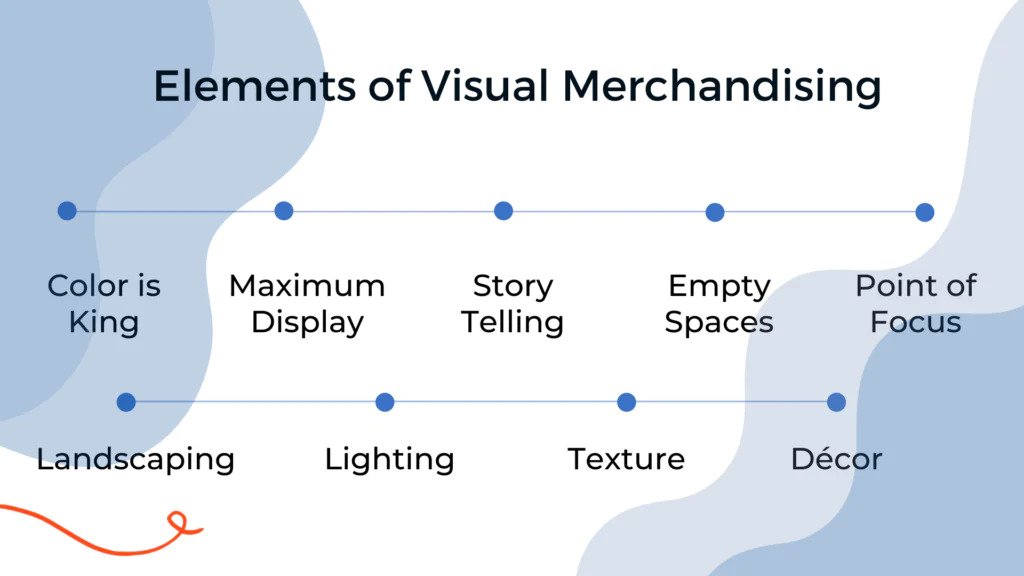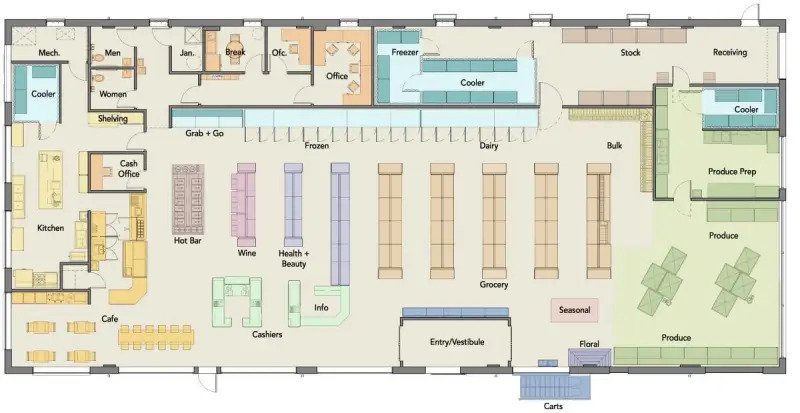Visual merchandising is a powerful tool that retailers use to create an engaging and visually appealing shopping experience for their customers. It involves the strategic placement of products, signage, and displays to attract attention, highlight key features, and ultimately drive sales. In this ultimate guide to visual merchandising, we will explore the key principles, strategies, and techniques that can help you become a successful visual merchandiser.
Understanding the Importance of Visual Merchandising
Visual merchandising is a crucial aspect of retail marketing that involves creating visually appealing displays to attract and engage customers. It is the art of presenting products in a way that not only showcases their features but also tells a story and evokes emotions. Understanding the importance of visual merchandising is essential for retailers to effectively communicate their brand message, enhance the shopping experience, and ultimately drive sales.
First and foremost, visual merchandising plays a key role in capturing customer attention. With the ever-increasing competition in the retail industry, it is essential for businesses to stand out from the crowd. Eye-catching displays, creative arrangements, and compelling product presentations are all elements of visual merchandising that can help grab the attention of potential customers and entice them to explore further.
Brand Identity and Values
Moreover, visual merchandising helps retailers communicate their brand identity and values. By carefully curating displays that align with their brand image, retailers can create a cohesive and memorable shopping experience. For example, a luxury brand may use elegant and sophisticated displays to convey a sense of exclusivity, while a sustainable brand may focus on using eco-friendly materials and earthy tones.
In addition to attracting customers and communicating brand identity, visual merchandising also enhances the overall shopping experience. A well-designed store layout and visually appealing displays can create a pleasant and inviting atmosphere for shoppers. It can help customers navigate through the store easily, discover new products, and make informed purchasing decisions.
Direct Impact on Sales
Furthermore, visual merchandising has a direct impact on sales. A study conducted by the National Retail Federation found that 55% of consumers make unplanned purchases based on what they see in-store. Effective visual merchandising techniques such as product grouping, color coordination, and strategic placement can influence customer buying behavior and encourage impulse purchases.
Lastly, visual merchandising allows retailers to showcase the unique features and benefits of their products. Through creative displays, retailers can highlight the functionality, quality, and value of their offerings. This not only helps customers understand the product better but also builds trust and confidence in their purchase decision.
Key Principles of Visual Merchandising
To ensure effective visual merchandising, several key principles should be considered:
Layout and Flow: The layout of a store plays a crucial role in guiding customers through the space. A well-designed floor plan ensures a smooth flow of traffic, allowing customers to easily navigate and explore different product areas. It is important to create clear pathways and avoid clutter to promote a seamless shopping experience.
Window Display: The storefront window is a powerful tool for attracting potential customers. A captivating window display should convey the brand’s identity, showcase featured products, and create curiosity. It should be visually appealing, well-lit, and regularly updated to capture attention and entice people into the store.
Color and Lighting: The use of color and lighting can greatly influence the mood and atmosphere of a retail space. Carefully chosen color schemes can evoke emotions and enhance the overall shopping experience. Lighting should be bright enough to highlight products but also create a warm and welcoming ambiance.
Visual Hierarchy
Visual hierarchy refers to the arrangement of products based on their importance or desired focus. By using different display techniques such as size, color, and positioning, retailers can guide customers’ attention towards specific products or promotions. The most attractive and high-value items should be prominently displayed to maximize sales.
Signage and Graphics
Clear and well-designed signage is essential for effective communication with customers. Signage should provide information about products, prices, promotions, and store policies. Eye-catching graphics and typography can also enhance the overall visual appeal of the store.
Seasonal Themes
Incorporating seasonal themes into visual merchandising can create excitement and encourage impulse buying. Retailers can use appropriate decorations, colors, and props to align with holidays, festivals, or changing seasons. This helps to create a sense of urgency and encourages customers to make purchases.
Interactive Displays
Engaging customers through interactive displays can enhance their shopping experience and increase their time spent in-store. This can include touchscreens, virtual reality experiences, or product demonstrations that allow customers to interact with the merchandise.
Storytelling
Visual merchandising is an opportunity to tell a story and connect with customers on an emotional level. By creating cohesive displays that align with the brand’s narrative, retailers can build a unique identity and foster a sense of loyalty among customers.
Effective Visual Merchandising Strategies
Now that we understand the key principles of visual merchandising, let’s explore some effective strategies that can help you create compelling displays:
1. Window Displays
Window displays are your first opportunity to capture customers’ attention and entice them into your store. Create visually stunning displays that showcase your best products and reflect your brand identity.
2. Feature Displays
Feature displays are strategically positioned within the store to highlight specific products or promotions. Use creative props, signage, and lighting to draw attention to these displays.
3. Color Blocking
Color blocking involves grouping products of similar colors together to create a visually impactful display. This technique can create a sense of harmony and make your products stand out.
4. Storytelling Displays
Create displays that tell a story or evoke a specific theme. This can help create an emotional connection with customers, making them more likely to engage with your products.
5. Interactive Displays
Interactive displays encourage customer engagement and interaction. Incorporate elements such as touch screens, virtual reality, or product demonstrations to create a memorable experience.
6. Seasonal Displays
Seasonal displays are a great way to create excitement and showcase relevant products. Use seasonal props, colors, and themes to create visually appealing displays that align with current trends.
Tools and Techniques for Visual Merchandisers
As a visual merchandiser, there are various tools and techniques that can help you execute your vision effectively.
One of the most fundamental tools for visual merchandisers is a planogram. A planogram is a visual representation that outlines the placement of products within a store to optimize sales and maximize space utilization. By following a planogram, visual merchandisers can strategically position products, create eye-catching displays, and guide customers on their shopping journey.
Another essential tool for visual merchandisers is lighting. Lighting plays a significant role in highlighting products, creating ambiance, and influencing customer perception. By utilizing different lighting techniques, such as spotlighting or backlighting, visual merchandisers can draw attention to specific areas or products, enhance the overall atmosphere, and create a memorable shopping experience.
In addition to planograms and lighting, visual merchandisers also utilize props and displays. Props are objects used to enhance the visual appeal of a display and create a theme or narrative. They can range from mannequins and signage to furniture and artwork. Displays, on the other hand, are carefully arranged product presentations that showcase merchandise in an attractive and organized manner.
By incorporating props and displays, visual merchandisers can create visually captivating scenes that capture customers’ attention and encourage them to explore further.
Furthermore, technology has become an increasingly important tool for visual merchandisers. Digital signage, interactive displays, and virtual reality are just a few examples of how technology is revolutionizing the field. These tools allow visual merchandisers to create dynamic and interactive experiences, personalize messaging, and gather valuable customer data for future decision-making.
Jewellery Industry is hiring Merchandisers for the Retail or Design Teams in Manufacturing companies. Understanding the role and having previous experience with Merchandising or Design will help you land a job.
Visual Merchandiser Online Course
A Visual Merchandiser Online Course is a comprehensive program designed to equip individuals with the knowledge and skills required to excel in the field of visual merchandising. This course provides a flexible and convenient learning experience, allowing participants to study at their own pace from anywhere in the world.
The course covers a wide range of topics related to visual merchandising, including understanding consumer behavior, creating effective window displays, designing store layouts, and implementing strategic visual merchandising techniques. Participants will learn how to use color, lighting, and props to create visually appealing displays that attract and engage customers.
One of the key advantages of an online course is the ability to access a wealth of resources and materials, including video lectures, interactive quizzes, and case studies. Participants will also have the opportunity to collaborate with other students and receive feedback from experienced instructors.
Upon completion of the course, participants will have gained the necessary skills to pursue a career as a visual merchandiser in various industries such as retail, fashion, and interior design. They will be equipped with the knowledge and techniques to effectively communicate brand messages and drive sales through visually compelling displays.
Conclusion
Visual merchandising is an art form that requires creativity, strategic thinking, and attention to detail. By understanding the key principles, strategies, and techniques outlined in this ultimate guide, you can elevate your visual merchandising skills and create captivating displays that leave a lasting impression on customers. Remember, effective visual merchandising is not just about making products look good; it’s about creating an experience that engages customers and drives sales. So go ahead, unleash your creativity, and transform your retail space into a visual masterpiece!







